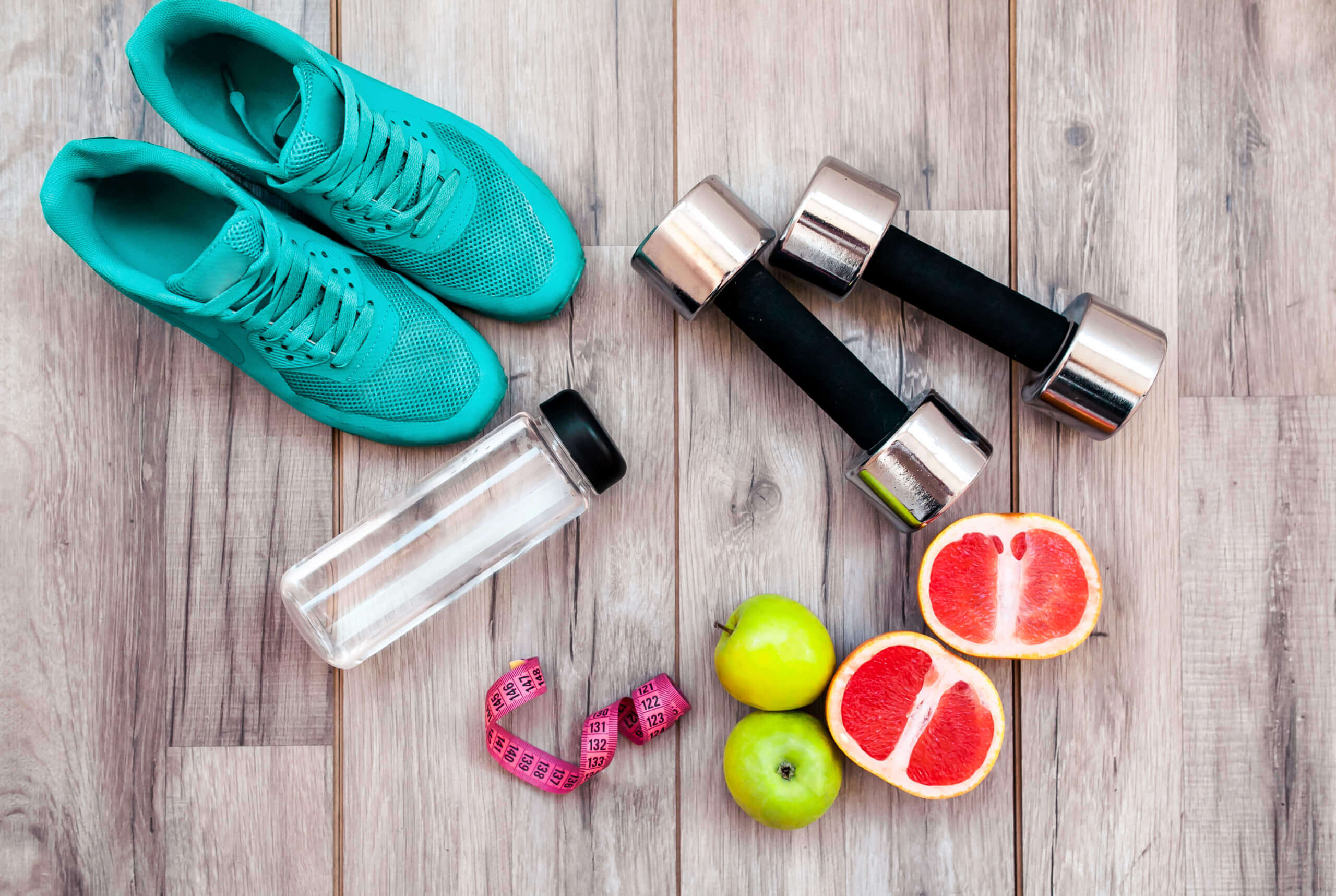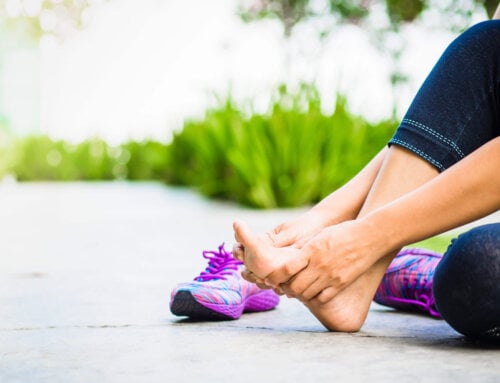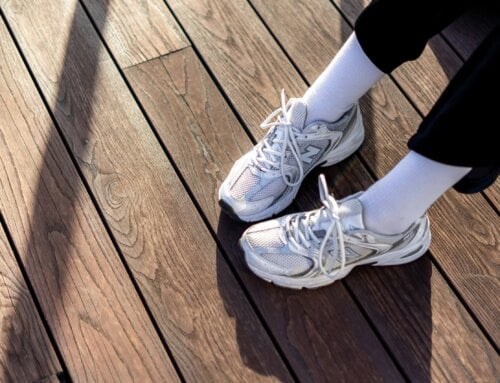Attempting to utilize weight loss techniques and strategies can be overwhelming, especially when you also have diabetes. “Roughly 42% of adults in the US live with obesity and another 38% live with being overweight.” Feeling hungry all the time can happen when you make irrational changes to your present eating plan. Binge eating and constant snacking can creep up on you when you deprive yourself of high quality foods. Weight loss not only improves your blood sugars and specific diabetes risk factors, but it can reduce your cholesterol levels, your risk of hypertension and your overall chance of cardiovascular disease.
Read and follow some easy ideas that you can incorporate into your daily life for eventual and maintained weight loss.
-
Weigh yourself first thing in the morning right after emptying your bladder
Your weight can vary up to 2-5 pounds daily depending upon what time you weigh. If it is before or after a meal and even from what you have eaten (such as salt) the day before. Frustration happens when you see the numbers on the scale go up from day to day although you think you are following a reasonable eating program. To be more consistent, try to weigh yourself the same time each day and on the same scale without clothing and with an empty bladder.
-
Drink Water
Your body is made up of 70% water. Drink a 6-8 ounce glass of plain water prior to eating your breakfast to fill you up and curb your appetite. “It stimulates your metabolism to help you burn calories.” Not drinking fluids during the nighttime can create dehydration in your body causing headaches, sinus issues and sluggishness the next morning. Water can plump up your skin, wash out toxins, lower fatigue, reduce stomach acid, lubricate joints and strengthen your immune system.
The temperature of the water is less important. Some of you may prefer cold, room temperature or warm water but different water temperatures supply benefits. Drink water all day long to keep you hydrated and take the edge off your hunger. You can try to drink a glass of water 30 minutes before lunch and dinner as well. Reach for plain filtered water or all-natural flavored, bubbly, sparkling water which is also calorie-free. You can add fresh sliced strawberries, chunks of watermelon, mint sprigs, lemon or lime slices or fresh ginger root for more flavor and no additional calories.
-
Do your exercise before breakfast or just do your exercise anytime
Check with your health care provider if you take insulin or certain other diabetes medicines which may require you to eat prior to exercising. Research states, “You may be able to get improved weight loss results if you exercise on an empty stomach.” You may burn more of the body’s existing fat for fuel. As long as you do your exercise routine you will boost weight loss by a bit and lower blood sugars, for sure. If you are not a morning person, choose what fits your schedule and just make it a habit like brushing your teeth. Mix it up to prevent boredom and injury. Make it fun, easy and playful so you actually look forward to your daily workout.
-
Wise breakfast foods
Eating a highly processed, empty calorie, no nutrition bowl of Frosted Flakes or Captain Crunch cereal is not a good decision especially when you have diabetes. Processed carbohydrates in refined cereals are absorbed quickly, raise your blood sugars rapidly and make you hungry shortly after eating. Instead, start your day with a high-quality carbohydrate and protein food combination such as oatmeal with a handful of walnuts, whole grain toast with a slice of low-fat cheese, a scrambled egg, or plain Greek yogurt with berries and unsalted peanuts. A high-quality carbohydrate and lean protein will start your day with you feeling more satiated and satisfied without empty calories.
-
Mix up your breakfast
People tend to eat the same breakfast over and over from habits and then become bored and binge. Try to mix it up and vary your daily breakfast foods. You do not always have to have a bowl of cereal or eggs. You can even eat dinner leftovers if you crave them. Experiment and try a tofu scramble instead of eggs or avocado on your toast instead of peanut butter. You will add more nutrients, be more satisfied, and avoid binging at the end of your day.
-
Add some veggies
We always forget we can add veggies to our breakfast for more fiber, potassium and vitamin C and to fill you up. The vitamins and minerals from veggies help with nerve and muscle function as well as bulking up your meals. A veggie omelet instead of cheese is perfect.
-
Sit, please
Research has shown that, “people ate 5% less when they are seated at a table compared to standing up or leaning against a counter.” The entire experience really matters. Sitting down also helps you focus on eating more slowly and having a purpose for a meal.
-
Set a pretty table
Besides sitting, you should set a pretty table with fresh flowers, napkin rings, cloth napkins and candles at dinner. Use plates and silverware instead of plastic ware, plastic cups and paper plates. Quick table settings equal quick meals. Place one long stem rose to set the mood for dining instead of just, “shoveling down food to get it over with”.
-
Consider weekly or daily meal planning
Meal planning has many advantages especially when you have diabetes and are trying to lose weight. Meal planning forces you to write things down and holds you accountable. Keep it simple and in the end, it will save you time, effort and money. Pick a plan that works for you. A weekly meal plan can prevent you from grabbing food when you are already too hungry. It can help you prevent food waste.
You can shop for most ingredients once a week and keep staples in the pantry.Choose to cook all meals ahead of time or just prepare them daily. You can order meal plans to be sent directly to your home – these can be purchased where you purchase breakfast, lunch, dinner and snacks or you can just order dinners to make meal planning easier. Boxed meal plans usually have different choices of meals from vegetarian to vegan to paleo to Mediterranean.
-
Variety counts all day long
Do not keep planning, making and eating the same meals over and over again. You often get in a rut and make chicken every Tuesday, meat loaf every Wednesday…. Or add variety. Choose new, unique and exciting foods to inspire your cooking and tastes. Search for easy recipes in books and online. Watch cooking shows. Ask friends and relatives for their favorite healthy recipes. This prevents food boredom. Boredom can cause you to make poor food choices and overeat. Creativity and variety in meals encourages better eating habits.
-
Sunshine exposure
Exposure to sunlight early in the morning can really boost your mood, outlook and attitude, as well as offering vitamin D. “It may help you have a lower BMI and keep the fat off. Scientists think that 20-30 minutes of sunlight between 8-12 noon may shrink fat cells below the skin’s surface.” Early sunlight helps you set your internal clock for improved sleep later in the day, which also assists with weight loss. Morning sunlight boosts serotonin hormone levels which may reduce stress levels.
-
Kitchen aids
There are a variety of kitchen aids which can make you think about portion size which is a main factor in achieving weight loss. Use measuring spoons, measuring cups, smaller plates, salad forks, teaspoons, kitchen scales, Tupperware with compartments, plastic plates with sections and small juice glasses. Appliances such as blenders and juicers can create nutritious meals when serving smaller portions. A green smoothie made of spinach, kale, parsley, green apple and fresh ginger can be added as a treat. Use crockpots, instapots, air friers, indoor grills or pressure cookers to simplify your life and create yummy meals.
-
Think before you eat
Think about what went into your meal preparation. Savor the smells, colors, textures and flavors of your food. Practice just eating. No TV, phone calls, computer screens or even reading. Mindless eating catches up with you and encourages overeating.
-
Smile more
When you laugh and smile or create happy thoughts you release serotonin, the feel-good hormone. This can reduce your emotional eating which frequently happens when we are stressed, bored, angry or sad.
-
Satisfied
You need to learn the sensation of feeling satisfied, not full or bloated. Sometimes, we eat as if we will not be eating again for many hours. In reality, with diabetes, you should be eating every 4-5 hours so there is no need to get to the point of “feeling stuffed”.
-
Juice glasses
If you decide to drink anything other than water or calorie-free beverages, only use a juice glass. Juice glasses hold between 4-6 ounces, a small portion. This way if you decide to drink 100% fruit juice (may seem healthful but will definitely raise blood sugars) you will be forced into drinking a reduced amount. Eat the whole fruit instead.
-
Drink it black
Morning coffee can be a challenge to drink just black. The caffeine gives you a boost but the flavored creamers, sugar packets, syrups and other add-ons really up the calorie count and sugar content. A morning Frappuccino can add 850 calories before the day even starts. You can always use an artificial sweetener and a touch of milk, but black coffee is a simple and tasty beverage on its own. It may take you a while to appreciate the taste. Same goes for tea. Drink it straight or add fresh ginger root for a spicy zing or cinnamon powder for a touch of sweetness.
-
Organize your pantry
When was the last time you updated your pantry staple supplies? Probably half the products are out of date. Do a clean sweep, check dates and purchase new items as needed. Have chicken, beef and vegetable low sodium broth ready to add to your dishes. These are all low-calorie yet full of flavor. Stock the pantry with dried spices such as oregano, pepper, cinnamon, nutmeg, thyme, rosemary along with garlic powder and different blends of Mrs. Dash. Mostly skip the salt but keep some Kosher salt handy if you need a small sprinkle in your cooking. Salt will add temporary weight gain from holding onto fluid.
Dried packages of whole grains like brown rice, wild rice, kasha, yellow rice or tabbouleh and quinoa should be available as a side dish. They are now sold in individual cups pre-cooked for easy portion control. Keep olive oil, flaxseed, avocado, grapeseed, canola oil and cooking spray ready for pan sauteing. “Sunflower, safflower and corn oil have been associated with fueling inflammation in the body.” Measure out 1-2 tablespoons max, since oil is high in calories. Different vinegars including white, apple cider, red wine, champagne, rice and balsamic vinegar can add depth to your dishes without more calories.
Store long cooking oatmeal and high-fiber bran cereal which is simple to prepare. Canned beans, canned lentils and canned fish such as tuna, salmon and sardines in water or olive oil are great for a quick meal. Store flavored, calorie free sparkling waters for a yummy drink treat. Black or green olives, roasted red peppers and artichoke hearts in olive oil can be added to your dishes and salads. Canned tomato products are full of lycopene and add flavor to stews and sauces.
Popcorn is a perfect go-to snack for people with diabetes. Keep bags already popped or buy kernels popped with air only. Mixed unsalted nuts are high in protein, healthy fat and a great snack in small portions. Keep placing your newly purchased products towards the back to have pantry foods stay fresh and in-date.
-
Do not skip carbohydrates
Each person with diabetes should have nutritional counseling in order to know how many carbohydrates you should eat per meal. Yes, carbohydrates raise blood sugar but it also depends on which carbohydrate foods you eat, which diabetes medication you take and your present activity level. Carbohydrates give your body energy, fiber and nutrients when eaten correctly. There is “no one size fits all.”High quality carbohydrates contain fiber which assists with blood sugars, insulin sensitivity and weight control. Fiber is not digested which keeps you satiated.
Fiber foods are considered high volume. Fresh veggies are low in starch (potatoes and winter squash) low in calories and high in fiber. Current guidelines call for “5 cups of vegetables a day”. Only 9% of Americans eat 2-3 cups daily. Add fiber to your diet slowly or you will encounter bloating and gas. Broccoli, radishes, lettuce, asparagus, mushrooms, green beans, spinach and cucumbers are just a few vegetables you can eat in large quantities without any guilt. You should ingest 20-30 grams of fiber daily for optimum health.
Eating “whole grains in suggested serving size is associated with an improvement in major risks of diabetes, obesity, after meal blood sugar highs and insulin resistance.” Optimize your carbohydrate choices with fruits, vegetables and whole grains. Eliminate processed, refined and empty calorie carbohydrates. “Most Americans eat 266 calories in added sugar foods per day.” These useless calories add up quickly. The top sources of added sugars eaten are sweetened drinks, desserts, candy, breakfast cereals and breakfast bars, snack bars and specialty coffee drinks. These are dangerous to your waistline, blood sugars and general health.
-
Prepare and prepack lunch and snacks
The more you take control with food preparation, the better your chances with weight loss. When you get to starving mode anything will do including bags of chips or greasy burgers and fries. Eating lunch out tends to include foods high in saturated, unhealthy fat, sodium and too many calories. By having a to-go lunch ready you will make healthier choices. Snacking is not off limits if you have diabetes and need to lose weight. You need to factor in the total daily intake and put good food in your body. Natural snacks win every time. Apples, grapes, whole grain crackers, unsalted nuts, low fat cheese are some examples.
-
Walk, run, bike ride, roller blade or take public transportation
In a perfect world, you could get your exercise on the way to work and again on the way home as well as during your lunch break. Most of you drive to work. A study published in the British Medical Journal found, “Those who walk, bike or even take public transportation to work have lower BMIs than those who commute by car.” Driving to work, followed by 8 hours of sitting at your desk, does nothing good for your waistline or blood sugars.
Although most weight loss is, “attributed to what and how much you eat”, exercise must be included daily as much as possible. Take the steps instead of an escalator or elevator. Do stretches at your desk. March in place 1-2 minutes at a time. Even 5 minutes of exercise sessions have shown benefits. Incorporate as much as you can in short bursts several times a day even if you do not have time for one long workout.
-
Plant a garden window box or just plant one outdoor pot with mixed herbs
You really do not need a “green thumb” to plant a few tasty herbs to make an ordinary meal special. Add fresh greens like parsley, mint, basil or cilantro to your salads, sides or main dishes when serving. There are no added calories. Just fresh flavor.
-
Skip the fad diets and diet foods
No fat, low calorie, intermittent fasting, Paleo, Cookie diet, no carb diet and many more fad diets appear daily. There are books, informercials and star power endorsements praising these diets. There is no proof that any of these programs work long term. They never really change or encourage long term proper eating habits. Many diet foods are made with additives and chemicals which can trigger systemic inflammation and lower good gut bacteria. Deprivation of real food can backfire.
-
Sleep and stress
Even with excellent eating habits weight loss can’t be accomplished or maintained with poor sleep and tons of stress. Both inadequate sleep and chronic stress ensures your hormones will be off and weight gain will occur. Your leptin and ghrelin hormone levels will be off causing cravings, emotional, mindless, roller coaster eating and grabbing food throughout the day and night. Find de-stressing techniques and ways to achieve improved and restful sleep. Ask your physician for help if you can’t do it alone.
Weight loss, especially with diabetes, can be extremely challenging and difficult. Even 5-10% weight loss that is maintained over time will certainly make a difference in your blood sugars and overall health. Stick to the easy tips above to get you started. Over time they will feel natural to you and will really work. Get started now!
Sources:
- http://www.webmd.com/diet/obesity/ss/slideshow-morning-habits-to-lose-weight
- Diabetes Self-Management (Summer 2021 issue) Diet with High GI tied to CV disease
- http://www.health.com/weight-loss/weight-loss-over-40
- https://www.health.com/weight-loss/foods-that-make-you-gain-weight https://blogs.webmd.com/food-fitness/20210521/what-is-high-value-eating
- https://eatthis.com/ways-your-job-making-you-fat/
- https:www.webmd.com/a-to-z-guides/ss/slideshow-sunlight-health-effects













Thank you very much. This was very informative and encouraging.